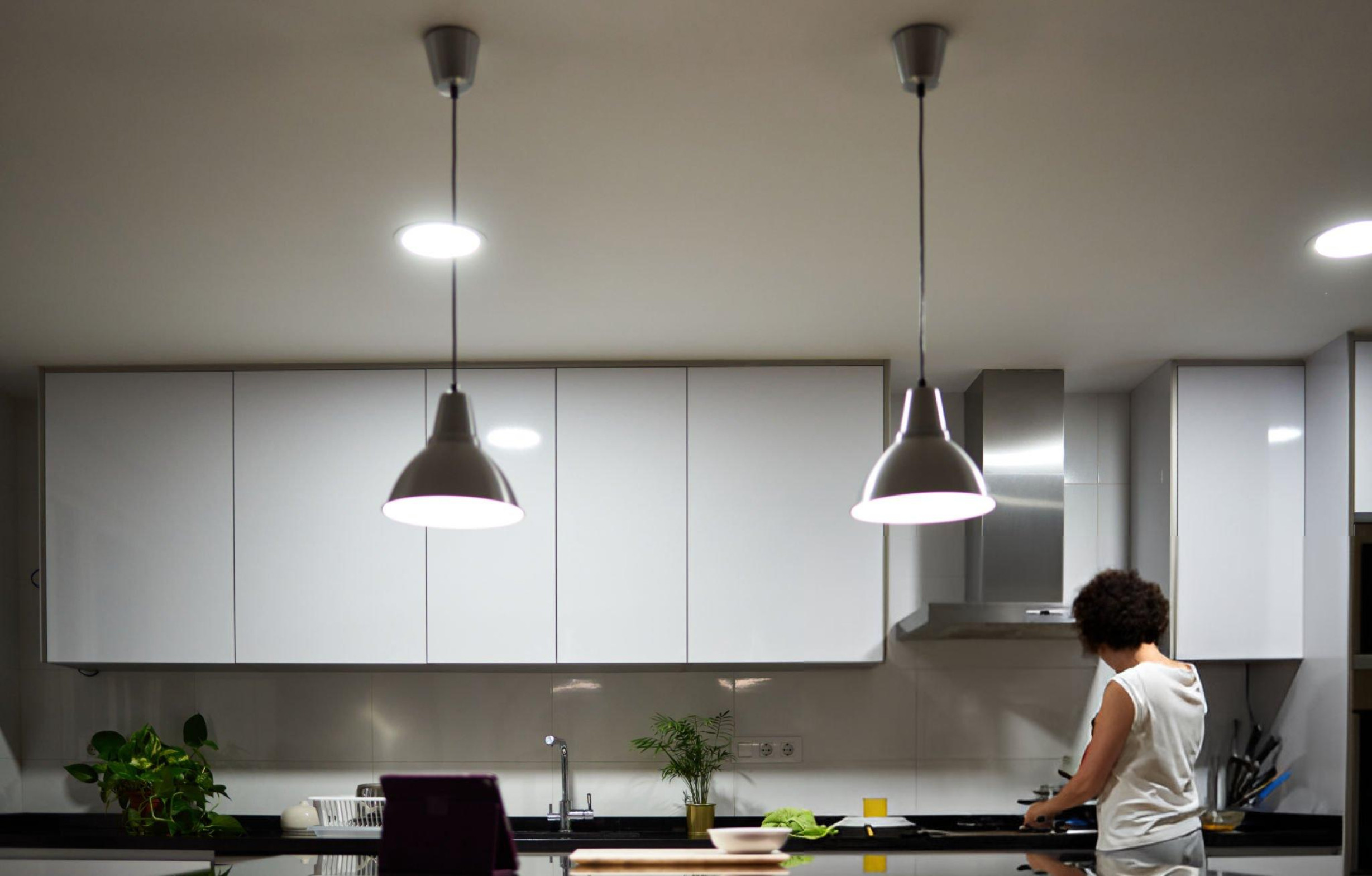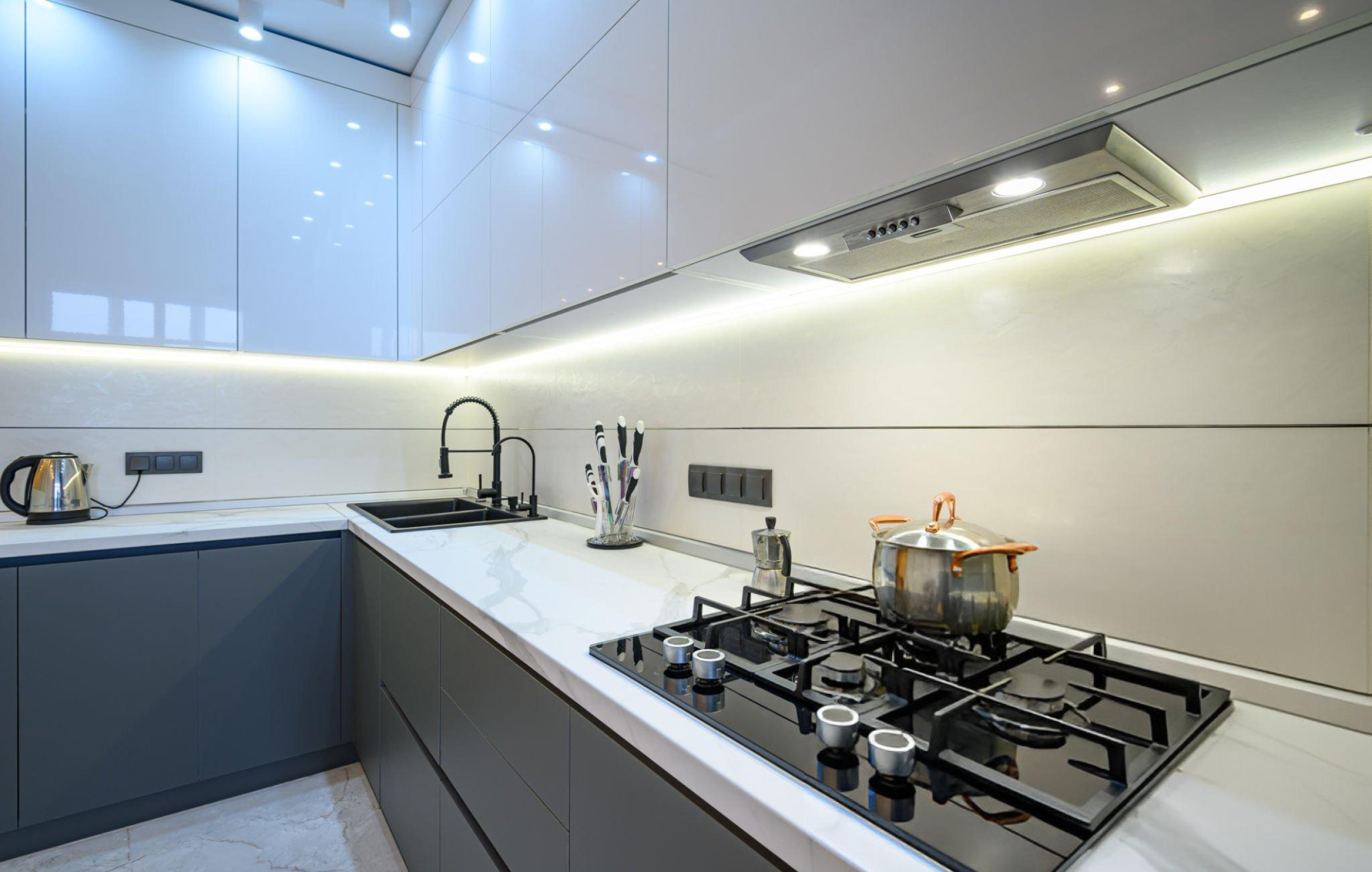Kitchen Lighting Guide: Task, Ambient, and Accent Lighting for a Perfect Kitchen
Great kitchen lighting does more than just illuminate your cooking space – it transforms how your kitchen looks, feels, and functions throughout the day. The difference between a kitchen that feels warm and inviting versus one that feels stark or gloomy often comes down to thoughtful lighting design that combines multiple types of illumination. Understanding the three essential layers of kitchen lighting – task, ambient, and accent – helps you create a space that works beautifully for cooking, dining, and gathering while enhancing your kitchen’s overall appeal. Most kitchens rely too heavily on a single overhead light fixture, creating harsh shadows and uneven illumination that makes cooking tasks difficult while failing to showcase the kitchen’s design potential. A well-planned lighting scheme addresses these problems through strategic placement of different light types that work together to create both functionality and atmosphere. Understanding the Three Layers of Kitchen Lighting Successful kitchen lighting combines three distinct types of illumination, each serving specific purposes while working together to create a cohesive, functional, and attractive lighting environment. Task lighting provides focused illumination for specific activities like food preparation, cooking, and cleanup. This direct lighting eliminates shadows and provides the bright, clear light needed for detailed work and food safety. Ambient lighting creates overall illumination that fills the room with comfortable, general light. This foundational layer provides basic visibility while establishing the overall mood and atmosphere of your kitchen space. Accent lighting highlights architectural features, artwork, or design elements while adding visual interest and depth to your kitchen. This decorative layer creates focal points and enhances the overall aesthetic appeal of the space. Layered approach combines all three types strategically throughout your kitchen, creating lighting that adapts to different activities and times of day while providing both beauty and functionality. Control flexibility through dimmers and switches allows you to adjust each lighting layer independently, creating the perfect illumination for any situation from bright task-focused cooking to soft ambient lighting for evening dining. Task Lighting: Illuminating Your Work Areas Task lighting represents the most critical lighting layer for kitchen functionality, providing bright, focused illumination exactly where you need it for safe and efficient food preparation and cooking. Under-cabinet lighting delivers excellent task illumination for countertop work areas by eliminating shadows created by overhead lighting. LED strip lights or puck lights mounted beneath upper cabinets provide even, shadow-free lighting across work surfaces. Pendant lights over islands and peninsulas provide focused task lighting for food preparation areas while adding attractive design elements to your kitchen. The key is positioning pendants at appropriate heights to avoid glare while providing adequate illumination. Recessed lighting strategically placed over sinks, stoves, and main prep areas supplements natural light while ensuring adequate illumination for detailed tasks. Proper placement prevents shadows while providing consistent light levels. Track lighting offers flexibility for directing light exactly where needed while accommodating changing kitchen layouts or work patterns. Adjustable fixtures allow you to modify lighting direction as needs change. Range hood lighting built into ventilation systems provides essential illumination directly over cooking surfaces. This specialized task lighting helps you monitor food safely while cooking at the stove. Light levels for task areas should be significantly brighter than ambient lighting, typically 50-100 foot-candles for detailed work areas. This brightness ensures adequate visibility for chopping, reading recipes, and assessing food doneness. Ambient Lighting: Creating Overall Illumination Ambient lighting establishes the foundation lighting level throughout your kitchen while creating the overall atmosphere and mood that makes the space comfortable for daily use and entertaining. Recessed ceiling lights distributed evenly throughout the kitchen provide comprehensive ambient lighting that fills the space with comfortable general illumination. Proper spacing prevents dark spots while avoiding over-lighting. Central fixture options like chandeliers or large pendant lights can provide ambient lighting while serving as focal points in kitchens with adequate ceiling height. These fixtures work particularly well over dining areas within the kitchen. Cove lighting hidden behind crown molding or architectural details creates soft, indirect ambient lighting that bounces off ceilings and walls. This technique provides gentle illumination without visible fixtures. Natural light integration through windows, skylights, or light tubes provides the best ambient lighting during daytime hours. Maximizing natural light reduces dependence on artificial lighting while creating more pleasant environments. Dimmer controls for ambient lighting allow adjustment of overall light levels based on time of day, activities, and desired atmosphere. This flexibility makes kitchens more versatile for different uses. Light distribution should be even throughout the space to avoid dramatic bright and dark areas that can feel uncomfortable or make the kitchen appear smaller than it actually is. Accent Lighting: Adding Drama and Visual Interest Accent lighting serves as the jewelry of kitchen lighting design, highlighting special features while adding depth, drama, and personality to your kitchen’s overall appearance. Display lighting in glass-front cabinets showcases dishes, glassware, or collectibles while adding warm glow to kitchen interiors. LED strips or small spotlights create attractive displays that enhance kitchen aesthetics. Architectural feature highlighting uses directed lighting to emphasize interesting ceiling details, exposed beams, or unique design elements that deserve attention and enhance the kitchen’s character. Backsplash lighting behind glass or translucent tile creates stunning visual effects while adding another layer of illumination. This technique works particularly well with natural stone or artistic tile installations. Toe-kick lighting beneath base cabinets creates subtle floor-level illumination that adds safety for nighttime navigation while providing sophisticated accent lighting that makes kitchens feel larger. Art and decorative lighting focuses attention on artwork, sculptural elements, or special collections that personalize your kitchen space while adding visual interest. Color temperature variations in accent lighting can create warmth and visual depth while complementing the overall lighting scheme. Warmer accent lights often create more inviting atmospheres. Choosing the Right Light Fixtures Fixture selection affects both the quality of light and the overall aesthetic of your kitchen. Understanding different fixture types helps you choose options that provide optimal performance while complementing your design. LED technology offers the best combination of energy efficiency, longevity, and light quality for most


